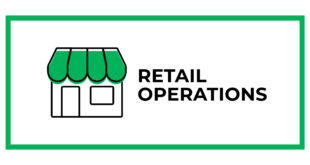Across grocery, pharmacy, home improvement and select other sectors, essential retailers are leading the way to reopen the world as we enter Phase 3 (“management”) of the COVID-19 pandemic. We estimate that this phase will last from now into early 2021. At this point, as-yet shuttered businesses are learning from essential retailers how the next phase might look in terms of customer experience, employee experience and operating procedures.
The circumstances aren’t easy: In the coming year, retailers will need to master adapting to local and regional variations in regulations and requirements, a flexible supply chain and infection rates that peak and decline. Record unemployment rates and lingering health concerns will reduce discretionary spending for consumers who are:
- …Adapting but will welcome a return to prior shopping habits. Nearly 20 percent of U.S. online consumers expect to continue to buy more online in the future, per Forrester’s mid-April Consumer Technographics insights. However, twice as many hope to resume their usual (pre-pandemic) shopping habits soon.
- …Adopting click-and-collect experiences and expectations. Approximately 1 in 5 online consumers in the U.S. would like “more places to offer curbside pickup”—which is still a challenge for retailers, especially at scale.
- …Expecting contactless payment options. To reduce contact with common in-store surfaces, nearly 20 percent of U.S. online consumers are now using contactless payment methods more often. Contactless payments are just starting to grow in the U.S. for both contactless-enabled credit cards and digital payment methods. Among leading U.S. retailers we surveyed, 88 percent accept at least one digital payment method, including PayPal (83%) and Apple Pay (42%).
There is good news: Essential retailers have already established new best practices in retail. Kroger has published best practices for other businesses based on its own learnings of operating in the pandemic, and the National Retail Federation (NRF) has also developed guidelines. Some of the initial best practices for retailers include:
- Developing omnichannel capabilities, like curbside pickup. Fulfillment options like this help retailers adhere to social distancing guidelines while still turning over in-store inventory. For large and smaller retailers alike, going curbside and contactless has been a manual effort and involved significant adaptation for processes and people. Still, 24 percent of U.S. online adults want more retailers to offer curbside pickup.
- Keeping your customer engaged with frequent updates and new content ideas. Use email, social media and other customer contact methods to highlight DIY content, including videos and online advice features. This content helps retailers continue to engage with customers, especially as the consumers continue spending more time gardening and on home improvement and “nesting” projects. If your store hours or details change, use every channel to spread the word: 46 percent of U.S. online adults are interested in hearing about store hours and/or closures.
- Using targeted discounts (when needed) to drive additional demand. Try not to overpromote generalized offers in your store; only 22 percent of U.S. online adults want communication about sales or promotions. Do measure and connect your customer’s offline and online behavior to make sure you’re sending the right messages to each customer. Start by using an incentive such as a coupon to gather email addresses at the store POS, then you can connect the dots between online and in-store customers using those email addresses as the unique identifier.
- Ensuring your employees feel safe. In April, 50 percent of U.S. adult employees told us they were increasingly afraid to return to work. To ensure their safety, continue using social distancing measures like monitoring customer capacity, marking one-way aisles, alternating open checkout aisles, and using plexiglass barriers at the checkout or customer service counters.
Essential retailers have wisely focused on solving immediate customer problems, enhancing the employee experience and using digital solutions to meet challenges and uncertain times head on. Prioritize the customer experience to drive lifetime value that will gain your company not only market share, but just as importantly, your customer and employee’s long-term loyalty.
Get additional resources on managing operations during the pandemic at hardwareretailing.com/covid.
About the Author
 Scott Compton is a senior analyst of digital business with Forrester Research Inc. with over 20 years of experience with direct-to-consumer marketing as his primary focus. He has proven expertise in practices such as customer experience, email marketing, user experience testing, SEO and conversion enhancements. Following his stint as a U.S. Marine, Compton earned a bachelor’s degree in communication design from California State University, Chico, and has been customer-obsessed ever since.
Scott Compton is a senior analyst of digital business with Forrester Research Inc. with over 20 years of experience with direct-to-consumer marketing as his primary focus. He has proven expertise in practices such as customer experience, email marketing, user experience testing, SEO and conversion enhancements. Following his stint as a U.S. Marine, Compton earned a bachelor’s degree in communication design from California State University, Chico, and has been customer-obsessed ever since.
 Hardware Retailing The Industry's Source for Insights and Information
Hardware Retailing The Industry's Source for Insights and Information








